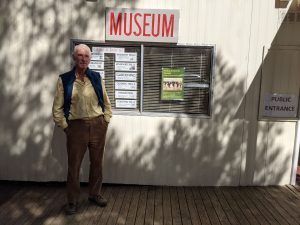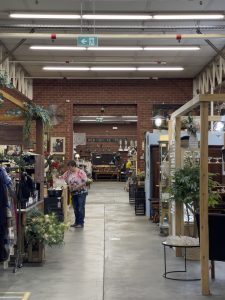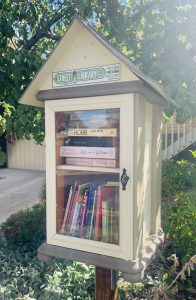Manuka Pool: a Canberra landmark
By GEORGE CROSS
NOT many places open at 6:30 am on a Wednesday, fewer still have lines out the front. Despite the weather, today is no exception. The lock clicks, the doors open and with the slapping of a body on water Manuka pool is open for another day.
Having long been a part of the inner-south and Canberra’s history, Manuka pool has been a refuge from the heat for 80 years. When the pool first opened the joint-attendants were required to work 102.5 hours a fortnight each. John Taverner, affectionately known as Tav, the current attendant and lessee, achieves this output in a week. It’s John’s 30th summer at the pool but his connections to this art-deco wonder go back much further. John’s father Owen took over the leasehold in 1956, a short-term lease that has stayed in the family since.
“I was just stopping through on the way back from Melbourne,” John recalls. “I was on my way to Sydney for a job at the botanic gardens when my father said, ‘What are you doing this year, son?’ I thought one summer wouldn’t hurt and 30 years later I’m still here.”
For the 80th anniversary John is planning a modest celebration, he hinted a possible fashion parade of vintage swimsuits but conceded that the best way to celebrate is by people coming down and “enjoying it”.
Like many institutions, the pool enjoys several in-house traditions, though none more celebrated than the ‘breaking of the ice’, which refers to the first person in the pool on opening day. This privilege has been (for the most part) held by Don Tier for over 30 years. Diver Don, as he is referred to by the regulars, is celebrating his 51st year at Manuka pool this summer. The 89 year old can still be seen swimming laps at 8:30am most days.
On one occasion during the late 1980’s some others were about to break the ice when the manager rang the bell and called out to the perpetrators: “Wait for the Don.” On the bell three dived in to be equal first for the season. Almost a decade later, during a countdown from three and to Don’s surprise, a skinny 10-year-old jumped in on two. Don’s perfect record was lost.
Don puts his remarkable attendance at the pool down to a couple of things, “Everybody sort of knows me. I don’t know everybody but it’s a very friendly pool, the community here is fantastic. Just look at the surroundings.”
The surroundings are indeed elegant. From the classic art-deco building to the manicured lawns and the original trees, Manuka pool is without a doubt one of Canberra’s jewels.
While its surrounds have changed remarkably since construction first began (it was neighboured by open paddocks and grazing land), the pool has remained resilient to the change which saw many other Canberra buildings of its time disappear. This can mostly be credited to the tireless work of the Taverner family and their predecessors.
Since the removal of the diving board several years ago due to a compensation case, Manuka pool has seen the disappearance of the radical youth that once terrorised the swimmers. While John and Don both concede that they miss having the springboard, John admits that without it safety has become easier to regulate and more enjoyable for those who prefer the calmer aspects of the place.
Without the diving board most of the day has been given to the lap swimmers, from the early rush in the morning before work to the late afternoons when the slapping can be heard while the sunlight dips below the tree line.
“Manuka pool is not just a building, it’s the life that’s created around it,” John says. This may be, but what a building. Among cold war era government departments, tasteless houses and giant apartment complexes, Manuka pool serves as a reminder that if you do something right, it will always look good.
It’s sustainability, much like Albert Hall’s, can be put down to constant care and tasteful renovations, virtuous efforts which were absent with the loss of the Capital Theatre and the deterioration of the Sydney and Melbourne buildings.
Today Manuka pool is enjoyed by many, unknown to some and loved by plenty. In a city that is fast becoming an urban sprawl, hidden by its vast trees and Manuka oval, this aquatic Mecca is a haven unlike any other.





Be the first to comment!